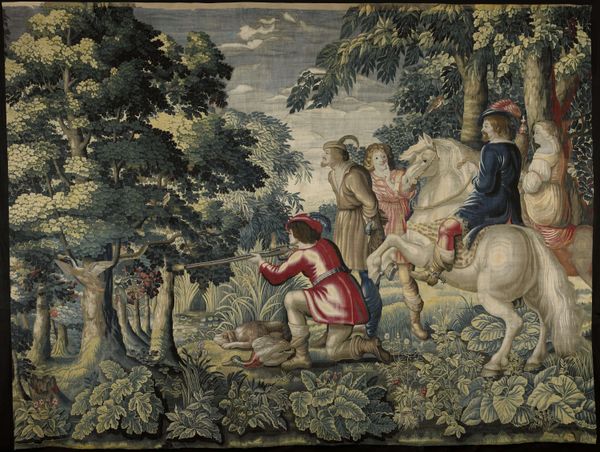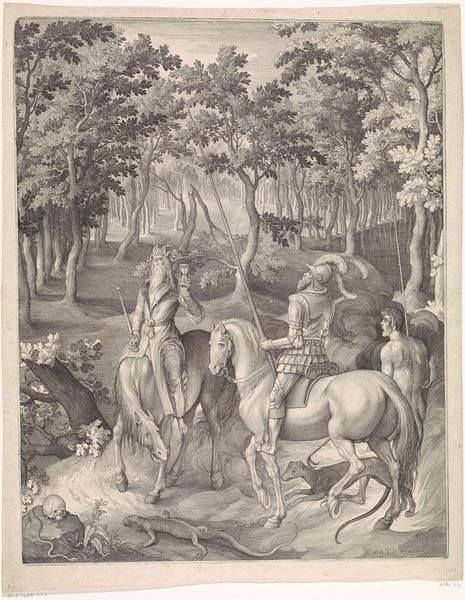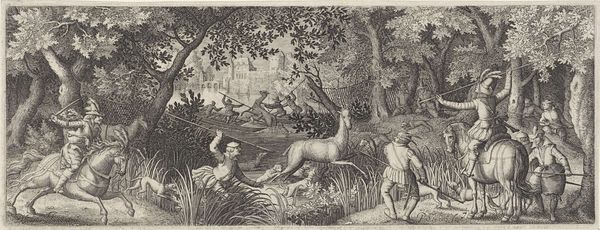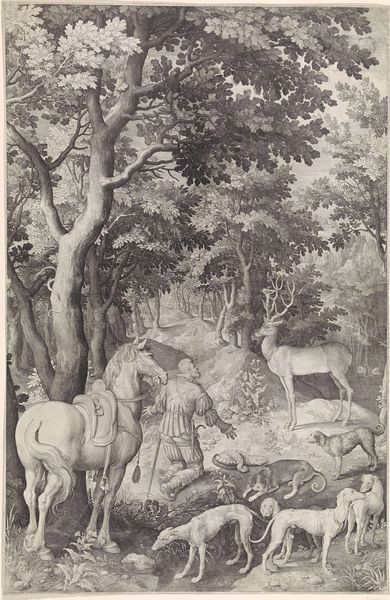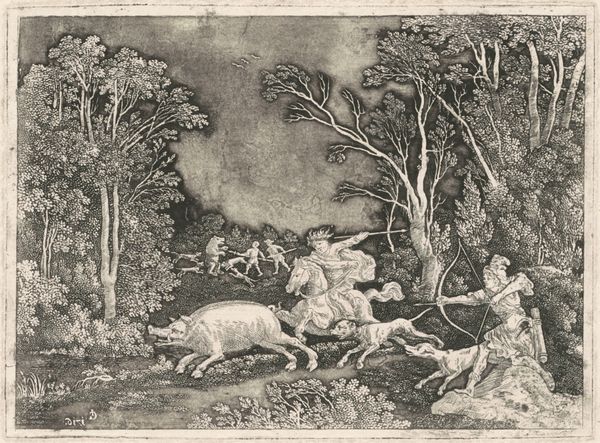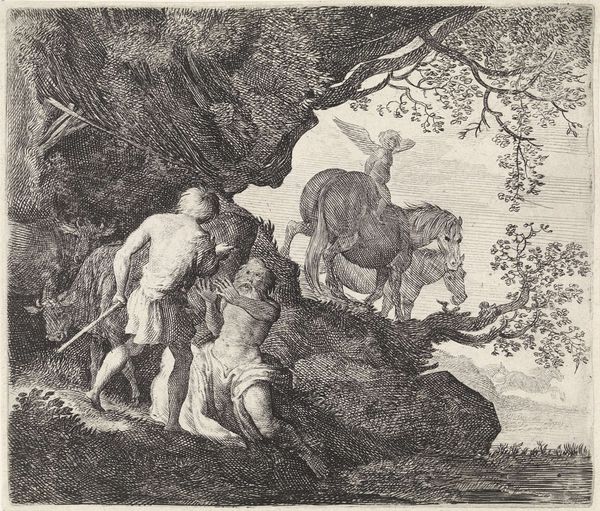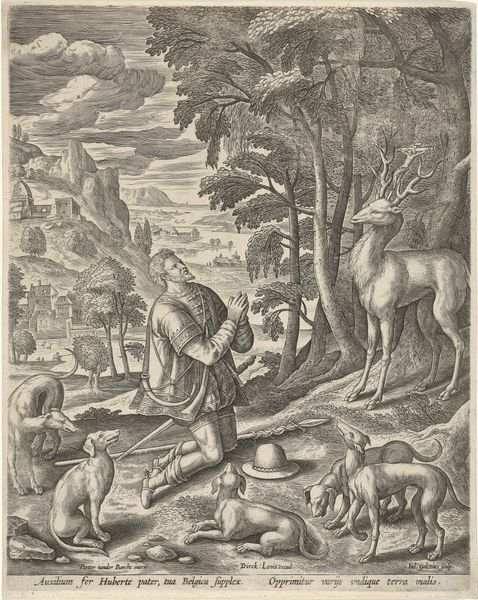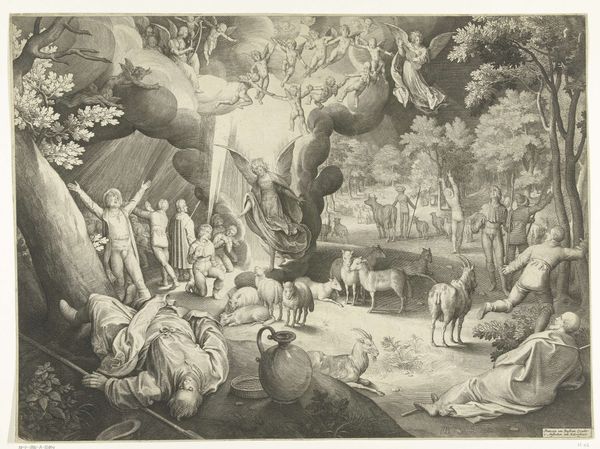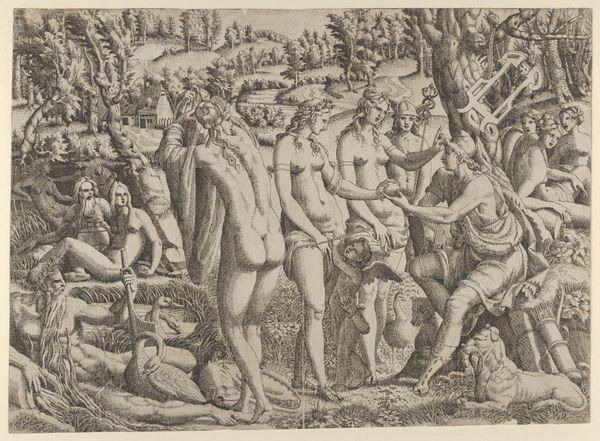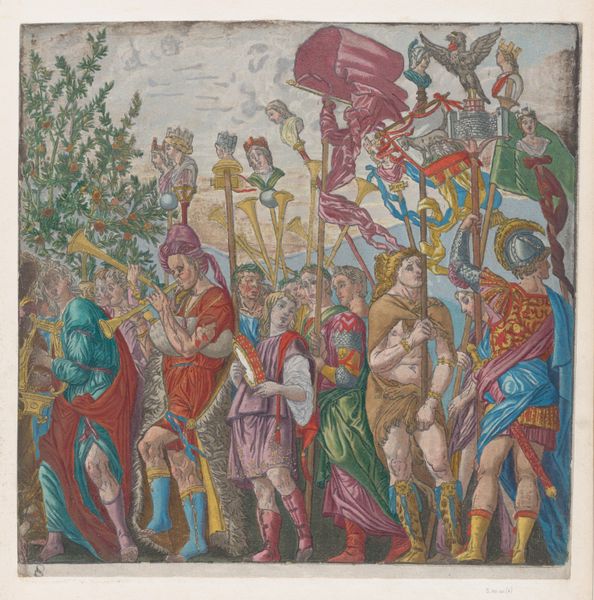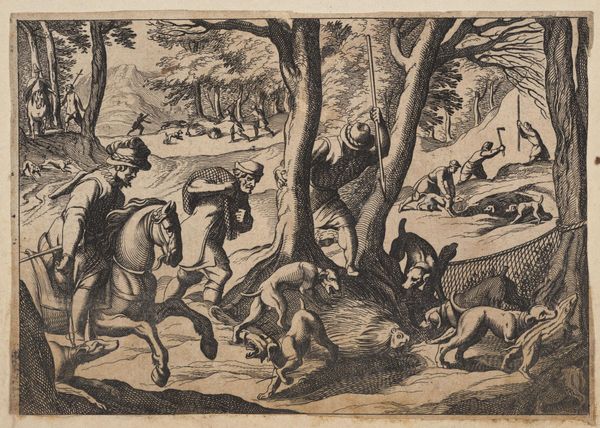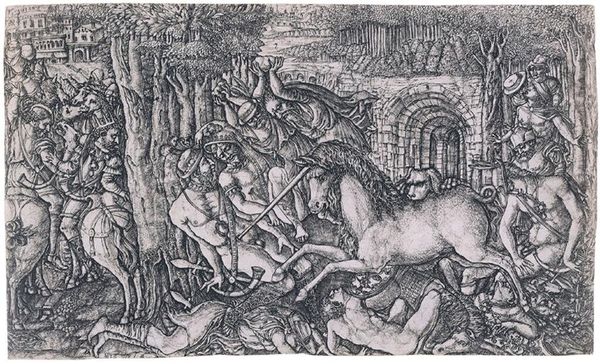
The Story of Nastagio degli Onesti (I), from The Decameron, by Boccaccio 1483
0:00
0:00
sandrobotticelli
Museo del Prado, Madrid, Spain
oil-paint
#
narrative-art
#
oil-paint
#
landscape
#
figuration
#
oil painting
#
mythology
#
history-painting
#
academic-art
#
italian-renaissance
Dimensions: 138 x 83 cm
Copyright: Public domain
Editor: So, this is “The Story of Nastagio degli Onesti,” an oil painting by Sandro Botticelli, dating back to 1483. What strikes me is the somewhat surreal quality of the repeated narrative, almost like a freeze-frame film. What do you make of this continuous storytelling, and the symbols contained within it? Curator: The continuous narrative speaks volumes. Botticelli isn’t just telling a story, he’s invoking a cultural memory, a persistent morality tale. Note the recurring figure of the fleeing woman, relentlessly pursued. Consider what that symbol evokes: societal anxieties about female agency, perhaps? And the knight, eternally bound to his grim task? Editor: It’s fascinating to see them repeat. But what’s the significance of framing this within a hunt? And why does Botticelli choose to display it so openly? Curator: The hunt has always been loaded with symbolism – pursuit, conquest, power. The open display... Ah, Botticelli places this spectacle before an audience, doesn’t he? Those observers bear witness. Are they learning a lesson? Are we, the viewers across centuries, meant to learn something too? The violence isn't just *happening*; it's being *seen*. What does witnessing do to a community's psychology? Editor: So the emotional and psychological weight extends beyond the immediate narrative? It's a mirror reflecting societal values back at the viewer, then and now. That's really unsettling, but it resonates so much more deeply than just a pretty picture. Curator: Precisely. Botticelli, through recurring images and forceful display, makes certain this tale – and its encoded cultural lessons – will not be forgotten. It’s about collective remembering, collective conditioning. A haunting image to carry.
Comments
No comments
Be the first to comment and join the conversation on the ultimate creative platform.
